Farmers were doing everything they could to be “sustainable” long before that concept was trendy. The science and technology behind modern agriculture continues to amaze me everyday.
And there’s one piece of science that recently stood out to me: Did you know that larger-scale dairy and pig farms can turn their manure into power or fuel?
This is a photo of me in front of the equipment that makes it happen, courtesy of Brightmark Energy and my friend Nikki Boxler of Boxler Dairy Farm in New York.
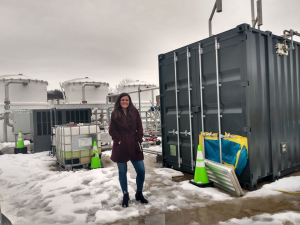
Here they milk 3,500 cows and collect the manure for their anaerobic digester. They push 80,000 gallons of manure per day, and the digester holds a whopping 1.7 million gallons of manure! Instead of that methane going into the environment, it is captured and recycled into renewable energy that is sold back to “the grid” and used to power homes, businesses, and vehicles.
Here are photos of us with the cows and one of their manure holding tanks, which is 16 feet deep! It can hold the manure of 2,000 cows for about three weeks.
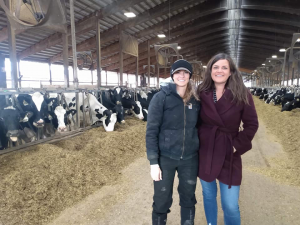
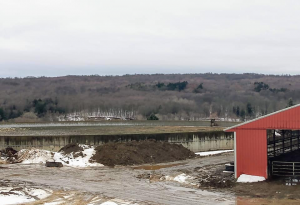
The manure pit is not very glamorous — I know, I know, it’s hard to make them look good, especially on a slushy winter day. (Although that New York country view is nice!)
After the manure is collected, it’s continuously pumped into this digester, which captures and recycles the methane. This is what the digester looks like:
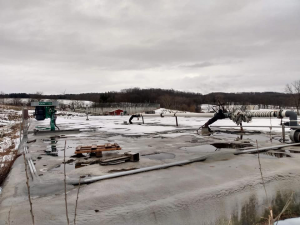
The solids and liquids are separated here and everything is recycled. Boxler Dairy Farm also has an on-site generator that powers it from the manure!
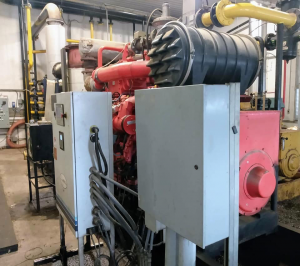
When talking to farmers about the benefits of this, they also appreciate the byproducts like fertilizer and bedding! This farm in particular no longer has to buy bedding (farmers usually use sawdust or sand-type bedding) so this helps their bottom line while recycling. Here is what the recycled manure-based bedding looks like:
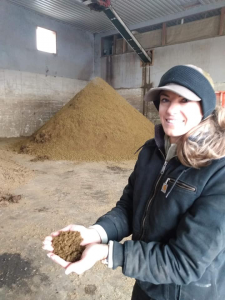
The underground pits (digester) are where the gas is made. Think of it like a giant stomach that’s constantly digesting the organic matter and trapping gasses for recycling. There are underground pipes that flow and eventually produce renewable natural gas which is cleaned; what’s left is the methane and CO2 which is compressed and pushed through membranes and cylinders that separate the CO2 from methane.
The methane is offloaded and decompressed for the pipeline, it’s a 24-hour process to pump the energy out and trucked away through a “virtual pipeline” every two days. Brightmark Energy partners with other dairy farms and power companies to provide this service, whether it’s for fuel, renewable natural gas, or power.
Poop-powered homes and businesses, who knew?

This technology has been around for a while and has traditionally been more popular in places such as Europe. But here in Western New York there are now five facilities that do this and partner with other local large-scale farms to make it happen. Not only can farmers receive the technology at no cost, but they can also bring in extra income by selling the methane back to the grid. Contact me for a personal introduction if you’re a larger-scale farm looking to implement something like this.
I love seeing innovation and new ideas come to fruition. Knowing that larger-scale farms can help the environment in so many ways is pretty fascinating. Thanks for the tour, guys!
Michelle Miller, the Farm Babe, is an Iowa-based farmer, public speaker, and writer, who lives and works with her boyfriend on their farm, which consists of row crops, beef cattle, and sheep. She believes education is key in bridging the gap between farmers and consumers.



